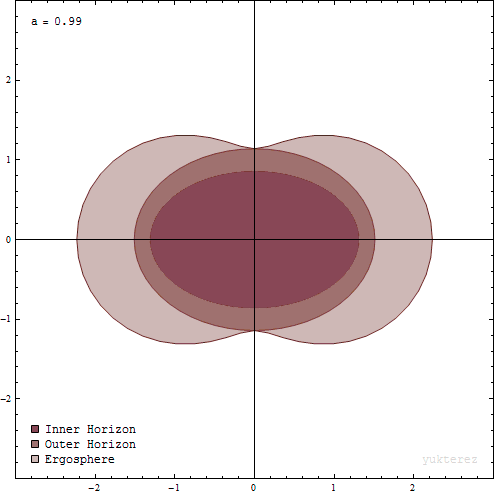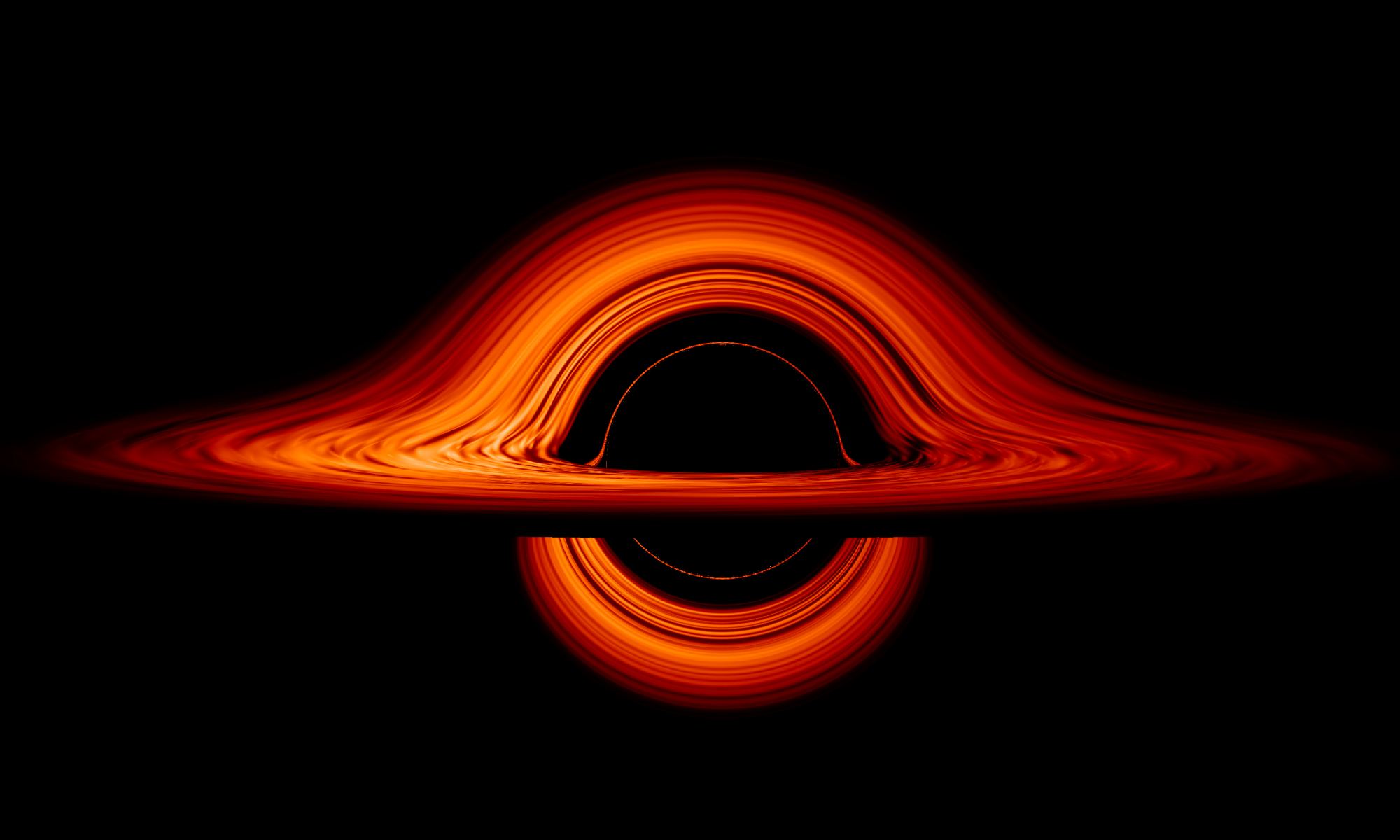Fifty years ago, English mathematical physicist and Nobel-prize winner Roger Penrose proposed that energy could be extracted from the space around a rotating black hole. Known as the ergosphere, this region lies just outside an event horizon, the boundary within which nothing can escape a black hole’s gravitational pull (even light). It is also here where infalling matter is accelerated to incredible speeds and emits all kinds of energy.
This became known as the Penrose Process, which many theorists have since expanded on. The latest comes from a study conducted by researchers from Columbia University and the Universidad Adolfo Ibáñez in Chile. With support from organizations like NASA, they demonstrated how a better understanding of the physics at work around spinning black holes could allow us to harness their energy someday.
The study, titled “Magnetic reconnection as a mechanism for energy extraction from rotating black holes,” was conducted by Luca Comisso and Felipe A. Asenjo. In it, they propose a new method whereby energy could be harnessed from a black hole by breaking and rejoining magnetic field lines near its event horizon, the boundary within which nothing can escape a black hole’s gravitational pull (even light).

As Comisso, a research scientist at Columbia University and the first author on the study explained in a Columbia News press release:
“Black holes are commonly surrounded by a hot ‘soup’ of plasma particles that carry a magnetic field. Our theory shows that when magnetic field lines disconnect and reconnect, in just the right way, they can accelerate plasma particles to negative energies and large amounts of black hole energy can be extracted.”
Whereas Penrose theorized in 1971 that this process of particle disintegration could draw energy from a black hole, Stephen Hawking would propose in 1974 that black holes could release energy through quantum mechanical emission (known as Hawking radiation). This was followed by Roger Blandford and Roman Znajek suggesting in 1977 that electromagnetic torque was the main agent of energy extraction.
For the sake of their study, Comisso and Senjo considered a key part of the Penrose Process, which is how magnetic field lines break apart and reconnect near the event horizon. This causes infalling matter to turn into two flows of charged particles (aka. plasma), one of which will be pushed up against the black hole’s spin and pick up negative mass-energy, causing it to fall past the event horizon into the black hole.

Meanwhile, the other plasma flow will be propelled in the same direction as the black hole’s spin, allowing it to pick up additional mass-energy and escape to the ergosphere. Inside the ergosphere, the reconnection of magnetic field lines is so extreme that the plasma particles are accelerated to velocities approaching the speed of light (aka. relativistic speeds).
What this means, essentially, is that a black hole will lose energy by eating negative-mass-energy particles. What’s more, the high relative velocity between captured and escaping plasma streams is what allows for the process where massive amounts of energy can be extracted from a black hole. As Asenjo, professor of physics at the Universidad Adolfo Ibáñez and coauthor on the study explained:
“We calculated that the process of plasma energization can reach an efficiency of 150 percent, much higher than any power plant operating on Earth. Achieving an efficiency greater than 100 percent is possible because black holes leak energy, which is given away for free to the plasma escaping from the black hole.”
While it might sound like science fiction, it is entirely possible that future generations will look to black holes to meet their energy needs. What’s more, argues Comisso and Asenjo, the process of energy extraction might already be taking place with a number of black holes in the observable Universe. This may be the reason for black hole flares, which are powerful bursts of radiation that can be detected from Earth.

“Thousands or millions of years from now, humanity might be able to survive around a black hole without harnessing energy from stars,” said Comisso. “It is essentially a technological problem. If we look at the physics, there is nothing that prevents it.”
In fact, it is possible that sufficiently-advanced species in our Universe are already exploiting black holes for their limitless energy. Such a scenario was recently suggested in a paper by Marion Cromb, a Ph.D. astrophysics student from the University of Glasgow’s School of Physics and Astronomy. It’s also a component of the Transcension Hypothesis, a proposed resolution to the Fermi Paradox originally proposed by Roger Smart in 2002.
In addition to being an ultimate power source, Smart also suggested that black holes would allow a “transcendent” (super-advanced) species to create “a computationally optimal domain of increasingly dense, productive, miniaturized, and efficient scales of space, time, energy, and matter.” There’s even the possibility of investigating alternative physics models, forward time-travel, and seeing the “seeds” of new Universes!
There are also theories about how tiny black holes could be used to power interstellar spacecraft (the black hole drive), or how an event horizon could become a means of propulsion (the Halo Drive). This latter idea works in much the same way as a gravity assist maneuver, where a spacecraft would use the event horizon of a spinning black hole to slingshot itself towards distant stars at speeds approaching the speed of light.
But in the meantime, studies such as this one are part of a growing effort to expand our knowledge of black holes and the exotic physics that take place in their vicinity. As Asenjo indicated, theoretical studies into black hole-physics are especially important in a time when global efforts like the Event Horizon Telescope (EHT) are allowing for the first images of black holes to be captured:
“Our increased knowledge of how magnetic reconnection occurs in the vicinity of the black hole might be crucial for guiding our interpretation of current and future telescope observations of black holes, such as the ones by the Event Horizon Telescope.”
The study, which recently appeared in the scientific journal Physical Review D, was made possible thanks to funding provided by NASA, Chile’s National Fund for Scientific and Technological Development (FONDECYT), and the National Science Foundation’s (NSF) Windows on the Universe initiative – a synthesis program that aims to bring theoretical physics and observational astronomy under one roof to answer some of the most profound questions.
Further Reading: Columbia News, Physical Review D


I recall a science fiction novel (or was it a movie?) in which the spaceship was powered by a captive black hole.
Well, that sucked my energy in any case. It is precisely because we don’t see “singularity supercomputing” or its associated time travel in computer science complexity classes – which are physically resource based – that we shouldn’t expect it.